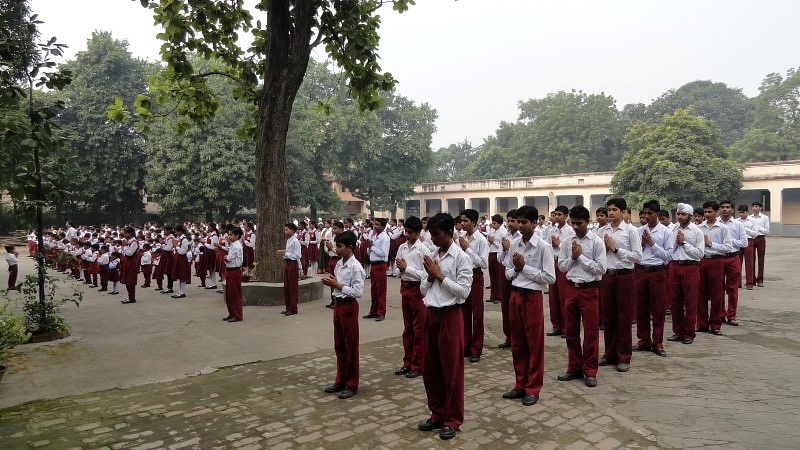Insta
Hindu Groups Seek Constitutional Amendments To Create Equal Rights For Hindus In Running Their Institutions

Students at Ramakrishna Mission school in Jamshedpur
The Vishwa Hindu Parishad (VHP) and other Hindu outfits on Saturday sought amendments to Articles 28, 29 and 30 of the Constitution in order to emphasise the civilisational development of the Hindu culture and tradition and mainstreaming of Hindu literature into the educational system.
The outfits, which have grouped under the banner of Hindu Charter Team, made these demands at a national conference that sought "Equal Right for Hindus" and pitched for non-interference of the state in the maintenance of the majority community's temples and religious institutions.
At the day-long deliberation, which was inaugurated by VHP's National Working President Alok Kumar, participants pointed out the overwhelming emphasis of foreign literature in the country's existing educational system and attempts to keep the syllabus insulated from the vast reserves of Hindu literature.
Currently, Article 30 empowers religious minorities to set up and run their own educational institutions, while Article 29 assures protection to their interests.
Article 29 assures protection of the interests of minorities. Any section of the citizens residing in the territory of India or any part there of having a distinct language, script or culture of its own shall have the right to conserve the same, it says.
Next, Article 28 disallows institutions receiving government funding from imparting religious instruction, and Hindu groups see this as posing a hurdle for the Hindu community.
"Article 28 prohibits the majority community from propagating the knowledge of its ancient civilisation, culture and traditions to the future generations," said Dr Venu Gopalan, a Sanskrit scholar from Chennai.
(With inputs from IANS)
Introducing ElectionsHQ + 50 Ground Reports Project
The 2024 elections might seem easy to guess, but there are some important questions that shouldn't be missed.
Do freebies still sway voters? Do people prioritise infrastructure when voting? How will Punjab vote?
The answers to these questions provide great insights into where we, as a country, are headed in the years to come.
Swarajya is starting a project with an aim to do 50 solid ground stories and a smart commentary service on WhatsApp, a one-of-a-kind. We'd love your support during this election season.
Click below to contribute.
Latest